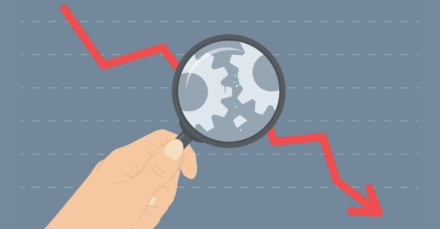Why Marketers Need to Become More Data-Driven in 2023

The lines between marketing and data science are continuing to blur. And with the rise of the Da Vinci CMO, marketers need to be just as data savvy as their technical counterparts.
That’s where data-driven marketing comes in. But what exactly is it and what benefits does it hold for marketing?
Read on as we dive into this topic to understand why marketers need to become even more data-driven in 2023…
What is data-driven marketing?
Data-driven marketing is the process of acquiring data through customer interactions and third parties to gain a better understanding of the customer. This new insight is then used to inform marketing decisions.
Why should marketers use data to inform their decision making?
As marketers, we can’t turn down an opportunity for improved ROI. But if that hasn’t quite convinced you, here is some additional background into why marketers need to spend more time diving into the data.
Data is a business’ most valuable asset
The whole world shifted during the pandemic. While marketers were never exactly short of data to begin with, with bigger audiences moving online, they found themselves with even more data at their fingertips.
But what use are buckets of data if they’re not used to learn more about target audiences, how your company or product is received or the best channels to include in your strategy?
Using data to inform strategies can make or break success. And data is now more valuable than oil, so it’s one of, if not the most, valuable part of any business and its growth.
Data can impact every area of marketing
Every area of marketing can be enhanced by data. But, while data-driven marketing has become a top priority for 55% of marketers, not all areas of marketing feel like data fits as seamlessly into their current ways of working.
In fact, we recently launched a survey in partnership with Censuswide which found that almost one fifth of marketers don’t use audience data to inform their SEO strategy.
The analytics world is changing – meaning you need to too
The third-party cookie is crumbling. If you’re using any analytics platform which relies on cookies for tracking, the data and insights available to you is going to change.
Marketers should use this as an opportunity to reassess their current level of data-driven marketing. As well as amending strategies to ensure this major change doesn’t impact the ability to make the best marketing decisions.
3 benefits of data-driven decision making for marketers
- Efficient media buying. Data-driven marketing is probably most advanced in programmatic. By leveraging algorithms and machine learning, ad agencies and marketers are removing a lot of the guesswork from media planning and buying.
- Targeting the right audience. Marketers are under pressure to do more with less. So, anything that helps to maximise results with smaller spend is a win. Data allows marketers to alter creative and messaging to ensure they fit the target audience and ads are only shown to the right targets for your campaign.
- Increased relevant messaging. Following on from the previous point, the days of one-size fits all marketing messages are over. For most companies, marketing messages need to become far more granular to resonate and create an affinity with consumers.
Securing buy-in to enable a data-driven culture
As already discussed, not every area of marketing has made the shift to becoming more data-led. And some might struggle to see the value in becoming data-driven.
Unfortunately, moving to a data-driven culture isn’t just a case of simply flicking a switch. To become truly data-driven, marketers need to secure company-wide buy-in or risk being left with siloed departments and a messy strategy that doesn’t get results.
When making a change to company culture, it’s vital to ensure that there is an infrastructure in place to make the transition as smooth as possible. This could be having the right levels of knowledge across the business or investing in the right tools to make it easier to incorporate new approaches into day-to-day life.
Which leads us nicely onto our next section…
How to choose the right data-driven analytics tool
Although not the only source of data for marketers, analytics and attribution tools are key to understanding the customer journey and which areas of marketing are, and aren’t, producing results.
Identify your goals
Understanding the goals you want to achieve with the tool, and developing a well-designed strategy, is just as important as the tool itself.
Start by targeting a handful of business problems or opportunities with the biggest impact and build your toolkit around those core goals.
Understand the end user
Relating back to the previous section in this blog, to capture the most value from data, you need to implement a strategy that involves everyone in the company. Consider how analytics applies to different roles within your organisation.
The tool you need for marketing is likely to be different from what data science need for decision-making.
Inspect your underlying data
A final (and very important) consideration to make when looking for a tool to help you become more data-driven…
It can be easy to get dazzled by a tool that compiles your data in pretty and easy-to-digest reports. But are these reports accurate?
Research conducted in partnership with our clients revealed that businesses relying on cookies for their web analytics were using data which is 80% wrong to inform their decision making. So, fixing the underlying issue is crucial.
Helping our clients become more data-driven at QueryClick
At QueryClick, we like to talk the talk and walk the walk.
Our attribution tool, Corvidae, allows us to draw actionable insights about what channels, ads and even creatives are working to engage our target audiences.
And not just that, we also work with GWI to gather audience insights to inform testing and strategy across SEO, Paid Search and Social Media.
If you’d like to discuss how we can help you become more data-driven, get in touch.
Looking to become more data-driven?
Chat to our award-winning team today to find out how we can help.
Own your marketing data & simplify your tech stack.
Have you read?
I have worked in SEO for 12+ years and I’ve seen the landscape shift a dozen times over. But the rollout of generative search engines (GSEs) feels like the biggest...
As you will have likely seen, last week Google released the March 2024 Core Algorithm Update. With it, comes a host of changes aiming to improve the quality of ranking...
After a year of seemingly constant Google core updates and the increasingly widespread usage of AI, the SEO landscape is changing more quickly than ever. With this rapid pace of...



